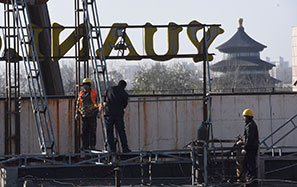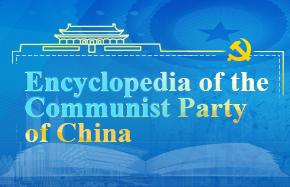Belt and Road Forum a historic test

Editor's note: Beijing will host the first Belt and Road Forum for International Cooperation in less than two weeks. Following are the views of three scholars on its global importance
Ruan Zongze, deputy director of the China Institute of International Studies
Opportunities for us to work together
The Belt and Road Initiative, proposed by President Xi Jinping in 2013, has become the most promising platform for international cooperation. The initiative, comprising the Silk Road Economic Belt and 21st Century Maritime Silk Road, has drawn a growing number of participants thanks to its global influence. More than 100 countries and international organizations support the initiative, while over 40 have signed cooperation agreements with China.
The initiative has added fresh impetus to China and the rest of the world to promote globalization and build a "community of shared destiny of humankind", which UN Security Council Resolution 2344 of March 17 referred to while calling for regional economic cooperation to promote sustainable growth in Afghanistan. The reference to a community of shared destiny of humankind in the resolution reflects the extent of China's contribution to global governance.
The UN reference was followed by New Zealand signing a memorandum of understanding on cooperation with China on March 31, indicating that more developed countries could join the Belt and Road Initiative.
Moreover, the China-led Asian Infrastructure Investment Bank already has 70 members, more than both the European Bank of Reconstruction and Development and the Asian Development Bank. The AIIB, in fact, is the world's largest multilateral development organization after the World Bank, and has five of the G7 countries as members.
Still, some scholars in the United States doubt the intentions of China's initiative, suggesting it is part of Beijing's plan to widen its influence in Eurasia and challenge Washington's global leadership. A few US scholars have even labeled it the Marshall Plan of China and have adopted await-and-see approach, while others oppose it simply because it was proposed by China. By doing so, they are only preventing US enterprises from benefiting from the initiative.
The Belt and Road Forum for International Cooperation, scheduled for May 14-15, will provide a platform for the participants to share their views about the future development of the initiative. In other words, although launched by China, the initiative can bring great benefits for all the participating countries. And it can help Washington and Beijing to work together in fields such as infrastructure construction in the US, and take measures to boost free trade in the Asia-Pacific region. Besides, the initiative can also help deepen Sino-US cooperation and promote peace, stability and prosperity in the Asia-Pacific.
Martin Sieff, a senior fellow at the Global Policy Institute in Washington
A constructive alternative to the gathering dark clouds
Four years after its formal launch in 2013, the Belt and Road Initiative continues to quietly generate momentum as one of the most important geostrategic developments of the new millennium.
Over the past 40 years, China has developed the greatest concentration of industrial and manufacturing capability, raising the overall standard of living of its people while also helping boost neighboring economies, which are among the greatest achievements of the human race.
Owing to its investments and still rapidly growing market for energy, food staples and raw materials, China has become the greatest economic engine powering the major economies of Africa as well.
But why is the Belt and Road Forum for International Cooperation in Beijing so important for China? Does it mean China will further promote globalization and regional cooperation? And how should China try to seek more chances of cooperation with other countries?
The Belt and Road Initiative is vital to promoting peace and stability in two crucial regions of the world-Central Asia and Eastern Europe. Central Asia's most visionary leaders, President Nursultan Nazarbayev of Kazakhstan, President Almazbek Atambayev of Kyrgyzstan and President Gurbanguly Berdimuhamedow of Turkmenistan have grasped the enormous value of transforming the region, long neglected as peripheral, into a central artery of world communication and commerce, because it will bring great benefits to their peoples.
The initiative offers the prospect of fulfilling through peace, rising living standards and improved international cooperation and understanding, the goal of making the heartland of the "world island"-the combined continents of Asia, Europe and Africa-the communications heartland, or nerve center, of the world.
That is why the forum in Beijing is so important. It offers the peoples of the "world island" a constructive alternative to the sinister gathering clouds of religious fanaticism, usually generated by poverty, fear and chaos, or the advance of menacing military alliances to threaten the national sovereignty of great nations.
Khalid Rahman, director general of the Institute of Policy Studies, Islamabad
Helping to fulfill the dream of shared destiny
The China-Pakistan Economic Corridor, as a "flagship project", is one of most crucial parts of China's Belt and Road Initiative, which has both economic and geopolitical goals. The impact of the Belt and Road Initiative can be gauged from the fact that, once completed, it will include more than 60 countries, more than half of global GDP, three-quarters of global energy reserves and more than 65 percent of the world population.
Due to its very substantial geographical location, the CPEC will serve as a primary facilitator in achieving the goal of global connectedness. On a regional level, it will gradually act as the center of economic activities, with plans turning into progress. It will not only benefit Pakistan's economy by creating more than 700,000 jobs in the country and adding 2 to 2.5 percent to its GDP; its larger impact will be evident for regional neighbors as well. There is good potential to link the CPEC with regional countries. The current focus is on its expansion toward the West: Afghanistan, Iran and Central Asia. Its expansion toward the East may take some time, as India has occasionally expressed reservations about it, mainly on technical grounds. Yet as things are progressing, the chances that the CPEC could play a catalyst role in even bringing the two countries closer are very much there.
Russia has vital interests in this region as well, as an active partner of both China and Pakistan. The Karachi-Lahore gas pipeline, worth $1.7 billion, has been pledged by Russia. And Russia, China and Pakistan have decided to work together to restore peace in Afghanistan.
Realizing the importance of the CPEC for Central Asia and Russia, their leaderships have shown greater interest in developing more cordial and cooperative economic and geostrategic relations with Pakistan in areas such as trade, energy sharing and tourism. Keeping in view China's economic and geostrategic interest in Central Asia and Russia, it is a vital development. The increased economic cooperation between Pakistan and Central Asia and Russia will also strengthen Pakistan's role in regional organizations such as the Shanghai Cooperation Organization.
Iran, too, has been playing a very significant role in regional cooperation through the CPEC, and it is significant that the Chabahar and Gwadar ports, once portrayed as competitors, have now been declared sister ports. Given the changing scenarios, the Iranian leadership hinted that China, Pakistan, Iran and Russia should cooperate more for regional stability. And China-Russia-Iran-Pakistan cooperation is being discussed in this context.
Given these scenarios of regional connectivity, there is a definite chance the CPEC will sow the seeds of more comprehensive regional connectivity and fulfill the dream of shared destiny.
























